Are you looking for an easy gardening method? Or are you a gardener with physical limitations that prevent you from bending over or kneeling on the ground? A raised vegetable garden bed is just what you need. Raised bed vegetable gardening has many advantages over regular gardening and is easy to set up and use. This article will share the benefits of raised beds, how to make a raised bed, and general tips about raised bed vegetable gardening for beginners.
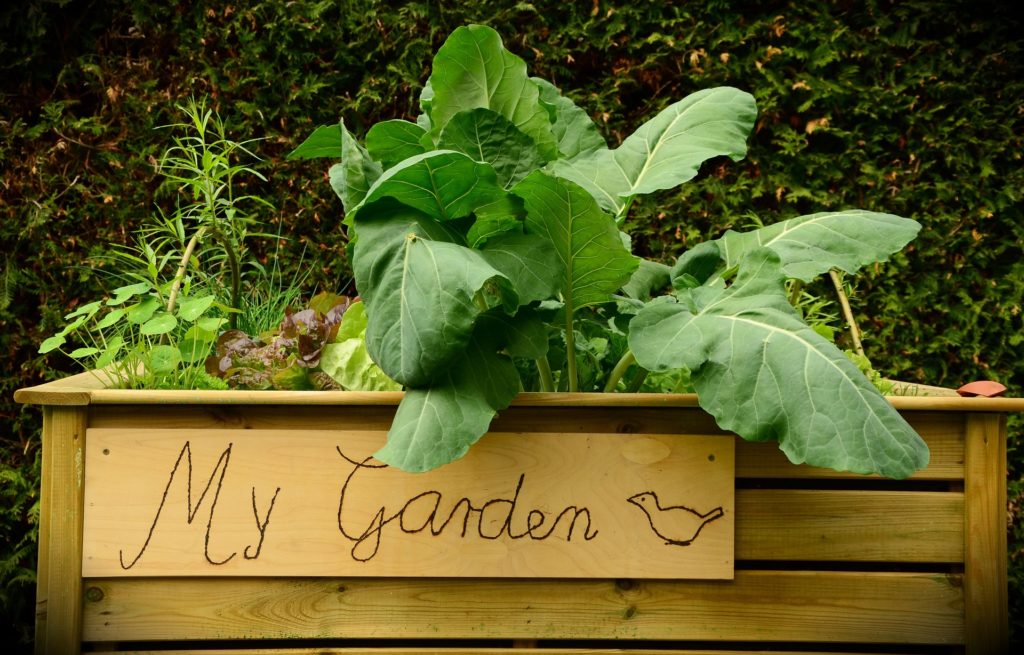
Raised Bed Vegetable Gardening: What and Why?
Raised bed vegetable gardening, simply put, is the practice of growing vegetables in a large, framed bed instead of growing vegetables in a surface garden.
Many gardeners have their own reasons for choosing raised beds over standard gardening. Here are a few:
- Gardening is easier: you do not have to bend over or kneel as much to plant, care for your plants, and harvest your yield.
- Suitability of soil: the soil on your garden floor may not be suitable for the vegetables you want to grow. With a raised bed, you can use the appropriate soil mix for your plants.
- Longer growing season: elevated soil warms up faster than leveled soil, so you can start plants that prefer warm soil earlier.
- Fewer weeds: fresh soil without weed seeds is used in raised beds. You can also reduce the space between raised bed plants, so weeds will have little or no room to grow.
- Pest control: when you use liners in your garden beds, burrowing pests like gophers and moles will not access your plants.
Do you like the idea of growing vegetables in a raised bed? Below you will learn how you can prepare a site for your raised bed and build your raised bed.
Constructing a Raised Bed for Vegetable Gardening
There are three steps involved:
- Site preparation
- Constructing the raised bed
- Adding soil into the raised bed
Get ready to make your garden bed.
Site Preparation
Begin preparing for your raised bed by choosing level ground. If the ground is not level, the soil’s moisture and temperature in the bed will be uneven. The first step in constructing a raised bed, therefore, is leveling the ground. Other steps in site preparation are:
- Removing weeds and trash from the ground
- Solarizing the soil so that weeds will not grow back
Soil solarization is an environmental-friendly practice of killing weeds in the soil using the sun’s energy. The processes involved are:
- Remove visible weeds from the soil by hand
- Water the soil until it becomes damp
- Cover the soil with a transparent tarp
- Cover the edges of the tarp with soil to prevent evaporation of water in the soil
- Wait for 4-6 weeks
Soil solarization is most effective during the heat of summer. You can use other methods of killing weeds before constructing your raised bed or use liners in your raised bed.
Constructing the Raised Bed
What You Need
To build your garden bed, you will need the following:
- Frame support and nails
- Material for the garden bed frame
- Liners (optional)
Liners are materials that separate the soil in your garden bed from the raised garden bed frame (to prevent quick rot of the structure) and the soil under the raised bed (to prevent weeds and pests below from reaching your plants). Liners can be:
- Cardboard
- Plastic bags
- Weed fabric
- Newspapers
When choosing the material for your raised bed, do not use materials coated with chemicals that can harm your plants. Some materials that you can use are:
- Fiber
- Concrete
- Aluminum
- Wood: cedar or redwood
Note: If using a concrete frame, you must wash and rinse the frame multiple times because concrete can alter the soil’s pHPotential of Hydrogen or pH is a measurement of the acidity or alkalinity of any material. pH is read from 0-14. 0-6.9 is acidic, 7 is neutral, and 7.1-14 is alkaline (or basic).
Now choose the length and width of your garden. Your raised bed’s width should not exceed 4 feet so that you can reach plants in the middle. The depth of your garden frame should be at least 12 inches (1 foot).
Assuming you are to construct an 8′ x 4′ x 1′ garden bed with a wooden frame, you will need two 8 feet long 2-by-12 planks, two 4 feet 2-by-12 planks, and twelve 2 feet-long rebars or stakes.
Have you gathered everything you need? It is time to start building.
Steps for Building
- Position the planks so that planks of equal length are opposite each other, with their inner edges touching the edges of the planks with a different length.
- Bury 1 foot of the rebars into the ground to keep the planks from falling
- Nail the planks together
- Make sure that there is no space between the boards of the frame.
The process above is the easiest way to construct a raised garden bed and is recommended for beginners. If you cannot build the raised bed yourself and don’t know someone to do it for you, consider buying pre-made aluminum or plastic beds.
If you choose to line the raised bed, this is the time. Place your liner on the ground inside the raised bed and lay some of it beside the frame. You can use nails or clips to bind the liners to the frame so that they do not fall while you are working.
Adding Soil into the Raised Garden Bed
What type of soil should you use in raised bed vegetable gardening? For your raised bed, you should mix topsoil with compostAn organic matter made from decomposed plant materials. Compost is often made from decomposing shredded leaves, hay, fruits, and other plant materials at a ratio of 25 part dry brown materials to 1 part fresh green materials., manure, or fertilizerAny material added into the soil (or sprayed on leaves) to give more nutrients to plants. Fertilizers often give Nitrogen, Phosphorus, and Potassium (NPK) to plants. Fertilizers can be organic or inorganic.. Remember to mulchMulch is any material (mostly organic) that gardeners cover the garden soil with. Mulch can be used to prevent water from evaporating (therefore increasing soil moisture), prevent weed from growing, ec. Examples of materials used to mulch are straw, weed fabric, hay, dead leaves, etc. the soil.
How much soil does your raised bed need? An 8*4*1 raised bed would need 32 cubic feet of soil. When you multiply the dimensions of your raised bed (length, width, and depth), you will find the amount of soil needed for your garden.
Congrats on successfully constructing your raised bed. It is time to plant your vegetables.
Planting Vegetables in a Raised Bed
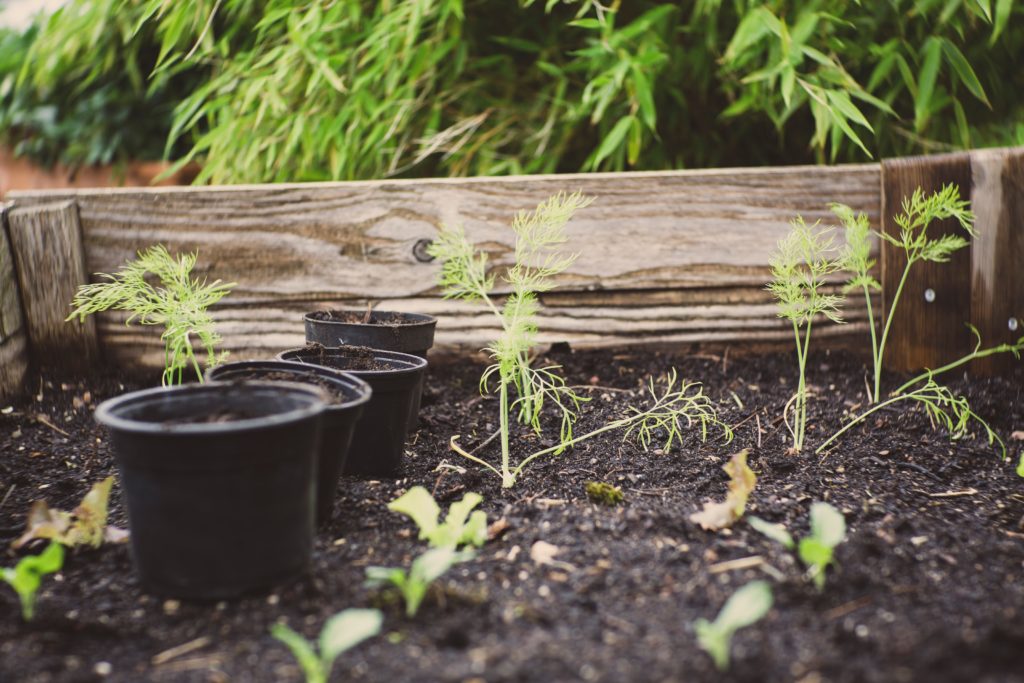
The soil in a raised bed is more porous, well-drained, and nutritious than soil in the garden floor so that you can reduce the spacing of vegetables in a raised bed.
Almost any kind of vegetable can grow in a raised bed. Easy vegetables that you should grow are:
- Herbs
- Carrots
- Peppers
- Eggplant
- Potatoes
- Tomatoes
- Cucumbers
- Watermelon
- Leafy greens
- Sweet potatoes
You can start your vegetables from seeds, but you could also buy seedlings from a nursery shop. Purchased seedlings are easier to care for, and you do not have to worry about germinating and thinningThinning in agriculture is the practice of removing some seedlings from the row. When gardeners sow seeds, they sow more than what they need so that they will have enough seedlings. If the seedlings that germinated become more than what they need, they will remove some so that others will have space and nutrients to grow. them.
Before planting in a raised garden bed, you should learn the how to grow your own food.
Caring for Raised Bed Vegetables
When planting in raised beds the soil gets dry quickly. You must constantly water your raised bed vegetables. In the summer, you can help retain moisture by mulching the bed. Other ways that you should care for your raised bed vegetable plants are:
- Remove weeds as soon as you see them
- Use stakes, trellises, or cages for climbing plants to save space
- Plant companion plants (see below for a list of beneficial plants)
- If you lined your raised bed, add earthworms into the bed to increase the soil aeration
- You should practice square foot gardening if you have limited space and want a high yield
Some companion plants and their benefits are:
- Garlic: Repels spider mites
- Basil: repels some insects (pests) from the garden
- Legumes: they boost the amount of nitrogen in the soil
- Lemongrass: repels some insects and can grow in partial shade
Plants like corn, fennel, cabbage, and broccoli do not make good companion plants, so you should grow them alone.
Enjoy eating your raised bed vegetables!
Conclusion
Raised bed vegetable gardening can be easier and less stressful while providing equal or greater yield. When growing in a raised bed, you can reduce the spacing of vegetables because the soil in a raised bed is more porous, well-drained, nutritious, and less compact.
You can build your raised bed with concrete, wood, aluminum, etc. If you use a concrete frame, wash and rinse it thoroughly to reduce the pH before putting soil into it.
Will you build a raised bed for your vegetable garden? What will you plant? Share your thoughts in the comment section below.




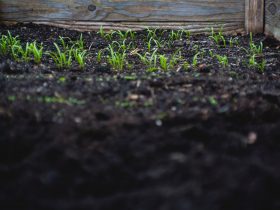

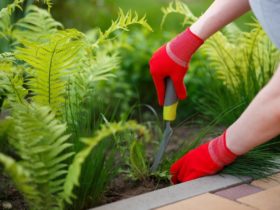


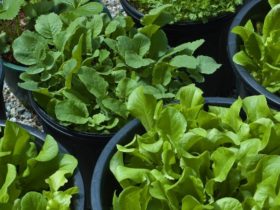

Leave a Reply